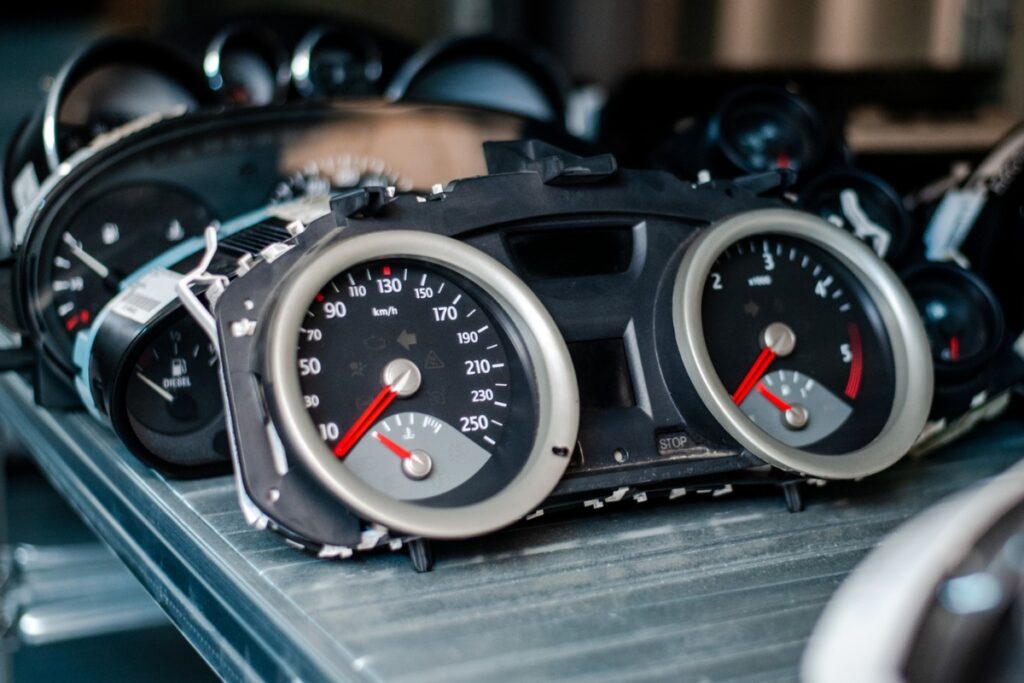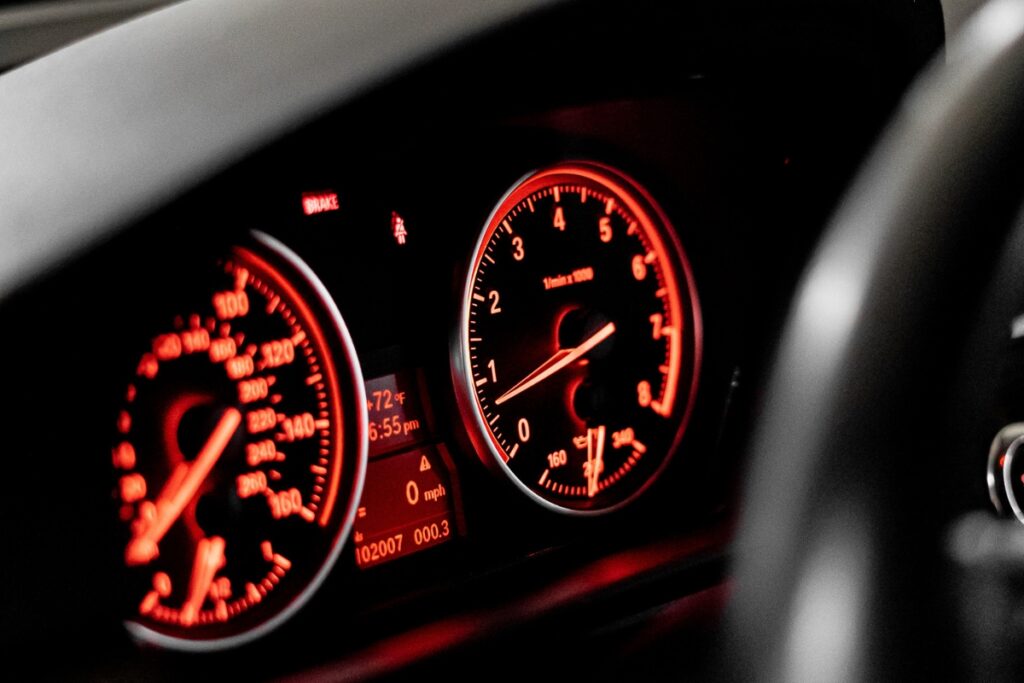The instrument cluster provides the driver with all the information needed for safe driving. It includes the speedometer, rev counter, fuel gauge, odometer, light indicator, and warning lights that alert you to a problem with a particular car part.
Usually, an instrument cluster lasts the lifetime of a car. But that doesn’t mean it can’t break down.
The signs of trouble vary and can be easily confused, so you must be alert for possible faults in one or all of the dashboard’s indicators. Knowing in advance the fault signs, their likely causes and how to change the instrument cluster will help you save time and effort.
Read also: Engine Control Unit: what is, the features, and possible failures
What are the signs of instrument cluster failure?
Different car models have different instrument clusters. And some are much more complex than others. But the failure signs are identical to all dashboards.
If you see any of these scenarios, then your car’s quadrant is likely faulty:
- The engine light comes on and off repeatedly;
- Gauges fail intermittently;
- Incorrect readings of indicators, such as speedometer, odometer or fuel gauge;
- Lights flashing in the instrument cluster;
- Lighting glowing more or less brightly;
- Blown quadrant lights;
- LCD or LED display, on newer quadrants, does not work properly;
- Indicators are not audible, such as when you leave the low beam headlights on when you remove the key from the ignition;
- Needles stuck in speedometer, tachometer and fuel gauge;
- Total failure of the quadrant, permanently or sporadically.

4 Main Causes of instrument cluster problems
Now that you know how to identify possible quadrant faults in your car, it’s time to find the sources of these problems.
Blown fuse
We start with the usual culprit. Fuses are the first wrongdoers pointed out whenever there is an electrical fault.
In the case of the quadrant, a blown fuse is only the cause of the fault when none of the indicators works. To solve this, identify the damaged fuse and replace it.
Electric current surge
In this case, the problem is not the instrument cluster but the alternator.
When an alternator has a poorly connected voltage wire, the regulator drives it at full load, saturating its elements. When the connection is restored correctly, the load returns to normal. This process creates an electrical current spike.
The power surge damages the alternator and all the electrical components in your car, including the instrument cluster.
On the other hand, a faulty regulator can also prevent power from reaching the dashboard. This problem is visible when the lighting is fickle or the numbers and words on the screen are unreadable.
Read also: Alternator: main failures and how to prevent them?
Wear and tear
Like any other element, the instrument clusters also wear out over time.
Although this deterioration is not noticeable on the whole part, the wear is prominent on some components, such as:
- burnt-out instrument panel lights;
- stuck indicator needles;
- burned out speedometer illumination;
- broken LCD or LED screen with illegible numbers or letters.
Therefore, the best thing to do is to replace the complete quadrant with a new part.
Excessive vibration
Are you used to driving on hilly roads with a lot of bumps? If so, then this could be the cause of your car’s quadrant malfunction.
The constant vibration can loosen the connections on the circuit board of the instrument panel, resulting in a stoppage in its proper operation.
Faulty gears
Some gauges, such as the speedometer and odometer, use small gears. These elements can wear out over time, which causes a mechanical failure of these parameters.
Read also: How to protect the engine of your car?
Defective quadrant
After checking the fuses, cables, alternator and gears, does the quadrant still not works? Then the problem may be with the dashboard.
In these cases, the only solution is to change the instrument cluster.

Instructions for changing the quadrant
Have you tested your car’s dashboard and realised that you need to replace this part but don’t know how?
We explain!
In this case, we use a Volvo XC60 as an example. To change the instrument cluster of this model, you only need a screwdriver.
Follow these steps:
- Start by disconnecting the car battery. As you will be touching electrical wires, we recommend disconnecting the battery 1 hour before starting this repair.
- Remove the plastics from the dashboard.
- Use the screwdriver as a lever and pull the parts out of their slots.
- Loosen the screws that secure the instrument cluster to the dashboard.
- Pull the quadrant carefully so as not to stretch electrical wires.
- Loosen the electrical wiring harness brackets using the screwdriver, and remove the instrument panel.
- Install the electrical wires in the new quadrant.
- Push the new instrument panel slowly into the corresponding slots.
- Tighten the screws to secure the instrument panel to the dashboard.
- Fit the dashboard plastics, pressing them together to secure them properly.
- Connect the battery and turn the key to make sure the dashboard works.
If you prefer, you can watch the step-by-step video tutorial below.
If in doubt, we recommend you visit a registered garage.
If you are looking for an instrument cluster for your car, you can find over 80,000 on our website for more than 60 brands.

